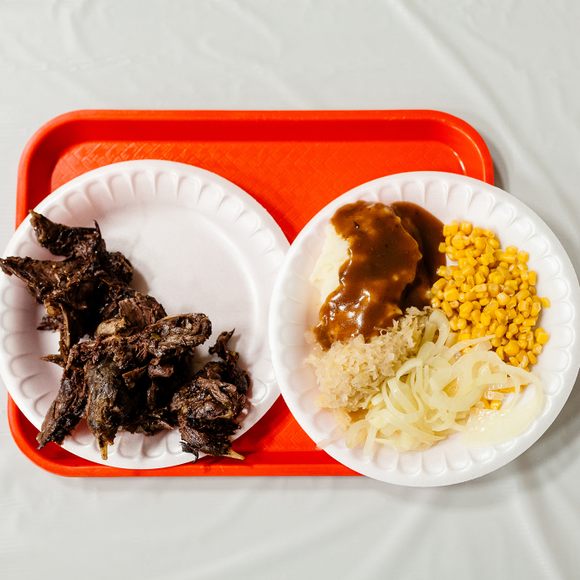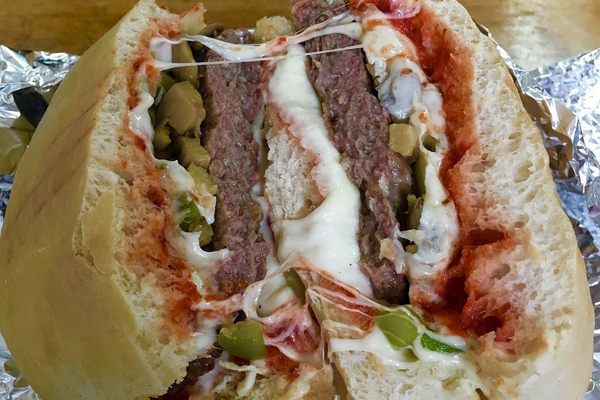Prepared Foods
Muskrat Dinners
In Michigan's Downriver region, a few churches are maintaining a fading Lenten tradition.
On special evenings during Lent in Michigan, families gather in church halls for a dinner where the main course is a “four-legged fish.” In the state’s Downriver region, the tradition of dining on muskrat, a wetlands-dwelling mammal, is part of a long worldwide history of eating semi-aquatic rodents on Lenten fasting days when fish is the only permissible protein.
Bud Willis, a cook who helps make the muskrat dinner at Trinity Lutheran Church in Wyandotte, told Hour Detroit that he first par-boils the meat with spices before frying it up with butter and garlic. For those apprehensive about staring a muskrat in the face, the head, legs, and tail are typically removed. On a paper plate, next to sides such as gravy-topped mashed potatoes, corn, and sauerkraut, the pile of dark meat doesn’t resemble its original form at all. As for its flavor? Many diners compare it to duck.
Though muskrat dinners are fading away—due to a decrease in both hunting and interest from younger generations—they once served an important role in community-building in the Downriver area, which describes towns along the southern stretch of the Detroit River. In their heyday, muskrat dinners were popular fundraisers throughout hunting season, which stretched from November through March. At the 1906 “gala muskrat banquet” in Monroe County, for example, connoisseurs flocked from as far as Seattle and New York to eat 2,000 prepared muskrats.
But the days of such celebrations are coming to an end. In 2007, one of Michigan’s most well-known muskrat-serving restaurants had to shutter its doors after failing to pay property taxes. While the tradition may be disappearing, there is still a loyal following. Trinity Lutheran’s dinner has been known to sell out of muskrats within an hour of opening their doors.
Where to Try It
-
Trinity Lutheran Church Website
465 Oak St, Wyandotte, Michigan, 48192, United States
Written By
v vnarmentroutSources
- www.freep.com/story/news/local/michigan/detroit/2019/04/16/catholics-permitted-eat-muskrat-during-lent/3485498002/
- www.nytimes.com/1988/04/01/us/wyandotte-journal-where-the-muskrat-is-a-delicacy-for-lent.html
- www.npr.org/sections/thesalt/2016/02/26/468166791/when-beef-is-off-limits-beaver-and-muskrat-make-it-to-lenten-menu
The Atlas Obscura Podcast is Back!
















